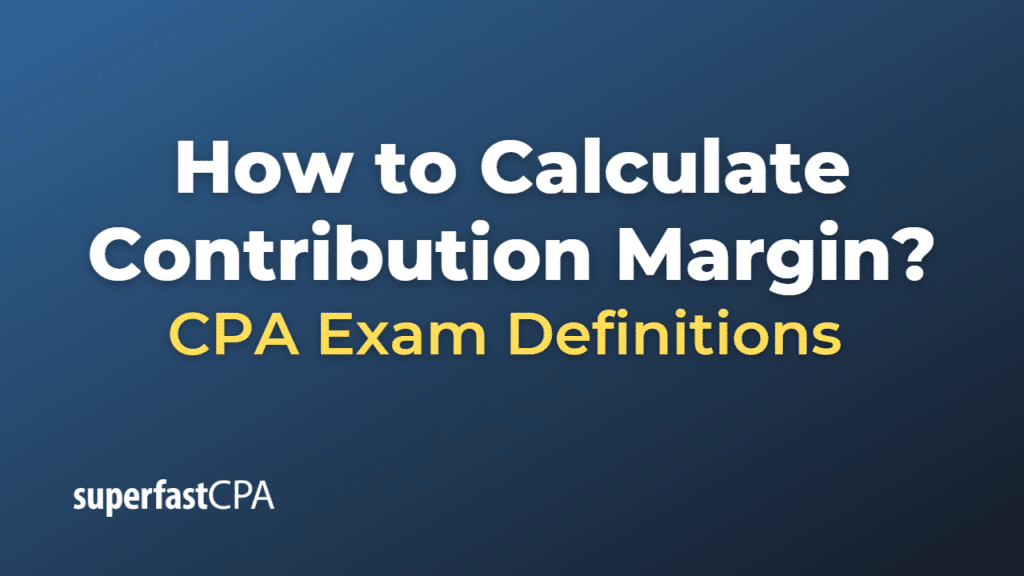How to Calculate Contribution Margin
The contribution margin is a profitability metric that shows how much revenue from each unit sold contributes to covering fixed costs, after variable costs have been paid. It’s a per-item profit metric, as opposed to total or gross profit.
There are two ways to calculate contribution margin:
- Per Unit Contribution Margin: This is calculated by subtracting the variable cost per unit from the selling price per unit. The formula is:
Contribution Margin per unit = Selling Price per unit – Variable Cost per unit - Contribution Margin Ratio: This is calculated by dividing the contribution margin per unit by the selling price per unit, and it’s usually expressed as a percentage. The formula is:
Contribution Margin Ratio = (Contribution Margin per unit / Selling Price per unit) * 100%
It’s important to note that variable costs are those that change directly with the volume of units produced or sold, such as raw materials, direct labor, and certain types of overhead like utilities or shipping costs.
The contribution margin is used to review the variable costs included in the production cost of individual items. It is also used to target total business profitability given the company’s total fixed costs.
Example of How to Calculate Contribution Margin
Let’s say a company manufactures and sells a product with the following financial data:
- Selling Price per unit: $50
- Variable Cost per unit (including costs such as materials, labor, etc.): $20
Now, let’s calculate the Contribution Margin per unit and Contribution Margin Ratio.
- Contribution Margin per unit:
Contribution Margin per unit = Selling Price per unit – Variable Cost per unit = $50 – $20 = $30This means that for each unit sold, $30 goes toward covering fixed costs and, once those are covered, towards profit. - Contribution Margin Ratio:
Contribution Margin Ratio = (Contribution Margin per unit / Selling Price per unit) * 100% = ($30 / $50) * 100% = 60%This means that 60% of each dollar of revenue from each unit sold contributes to covering the fixed costs and profit.
The Contribution Margin Ratio is particularly useful as it allows you to quickly estimate profitability for different levels of sales. For example, if the company sold 1000 units, the contribution to covering fixed costs and profit would be 1000 units * $30/unit = $30,000.













